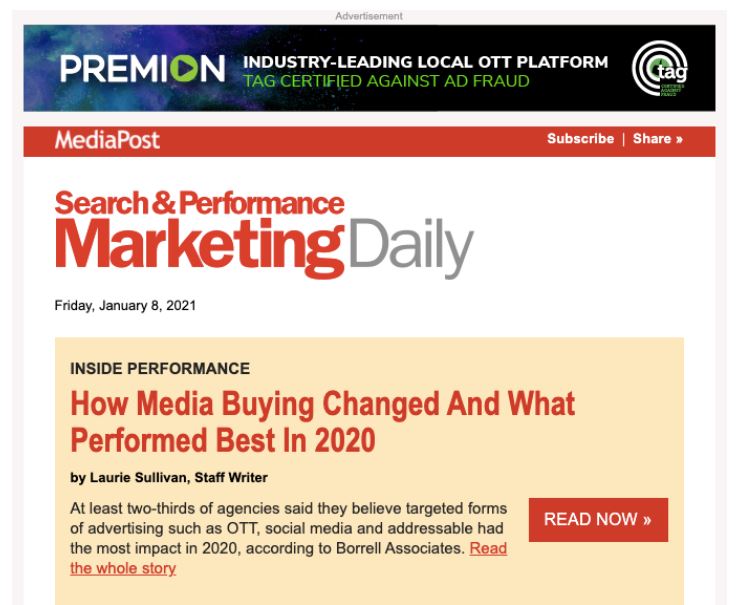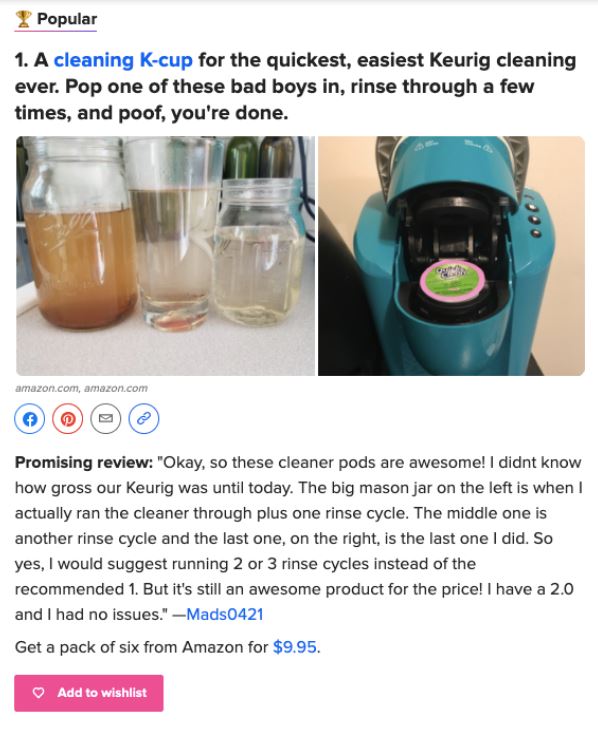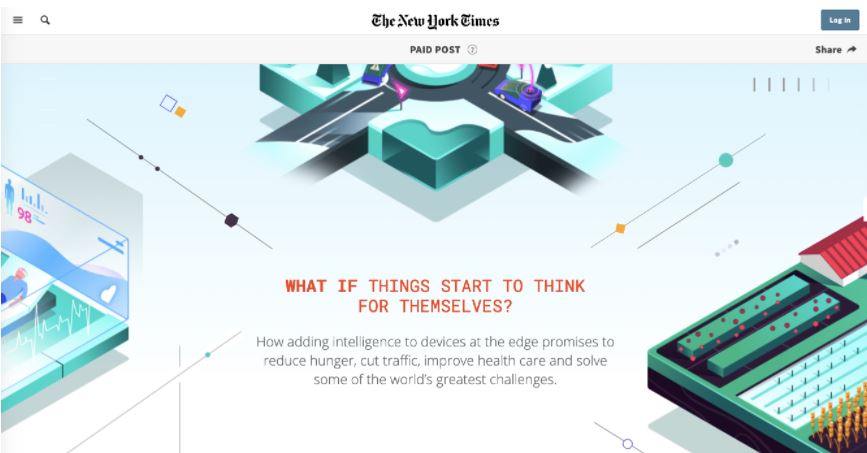Show, don’t tell. That’s the motto of any great communicator.
Admittedly, we’ve done a bit of both! That is, we’ve already told you about advertising strategies for publishers — from running targeted email newsletter ads with MadTech platforms to working with brands directly in building sponsored content. Now it’s time to dig a bit deeper and show you how these tactics play out by highlighting creative strategy examples in advertising.
Now, these aren’t just any online advertising strategy examples. They’re handpicked especially for publishers looking for innovative ways to drive revenue and increase audience engagement — across channels and platforms.
Let’s take a look.
1. Forbes: Display advertising
According to eMarketer, U.S. display advertising spend grew by 19.2% in 2020 and is expected to increase by another 23% in 2021. It’s easy to see why. Display advertising was one of the first ad formats to hit the web, and it can take many forms — interstitials that pop up before an article, videos on the side of a website, or clickable banners in an email. This Forbes article, for example, has three different display ads all in one screenshot:

Meaning, a single view on that article triggers a whole slew of impressions and potential engagements for Forbes and its ad partners — and that’s just one one article.
2. MediaPost & French Morning Media: Email advertising
Email advertising is one of the most valuable sources of revenue for publishers looking to monetize their traffic. That’s because email is already a trusted, widely used, and personalized channel for people across the world. It’s also opt-in, so publishers can promise advertisers that they’re reaching captive audiences who want to hear from them.
In fact, in 2021, eMarketer expects a record 4 out of 5 people to use email each month — and that’s a usage rate that still hasn’t reached its peak. The COVID-19 pandemic also caused email usage to skyrocket and revenue to increase by 86%, since people craved curated news updates from their mobile devices. That’s why more publishers are turning to email as prime real estate for ad inventory, like in this newsletter from MediaPost:

Also take French Morning Media, a publication that offers six local editions for French speakers living in different cities across the world. They were already running on-site banner ads through Google Ad Manager (GAM), but wanted to branch out and expand their mix. So they used Jeeng, which has a direct integration with GAM to deliver those banners in weekly email newsletters. As a result, email monetization drove 15% of French Morning Media’s total revenue.
3. BuzzFeed: Affiliate advertising
Affiliate advertising involves incorporating sponsored links into articles. So each time a reader clicks the link or even follows through to make a purchase, the publisher earns a percentage.
For this reason, affiliate advertising is a popular monetization strategy among publishers that write reviews and listicles. If they’re going to be compiling collections of recommended products for their audiences, they might as well earn some money from it, right?
Many publishers go so far as to include “Shop Now” or “Save to Wishlist” buttons in a proactive effort to drive leads for their e-commerce partnerships.
Just look at BuzzFeed, which has been ramping up its affiliate advertising operation to bring in revenue alongside its display ads and sponsored content. For example, a recent article, “30 Quick-Fix Products So You Can Focus On Other Things,” includes affiliate links and this accompanying disclaimer: “BuzzFeed may collect a share of sales or other compensation from the links on this page if you decide to shop from them.”

4. Jungo Labs: Native advertising
Native advertising takes the form of its surrounding content — be it an email, article, social post, or web page — so it fits more seamlessly and intuitively into the customer experience. Native ads also should include disclaimers to call out the fact that they were paid for and establish trust with the viewer.
Trivia publisher Jungo Labs, for example, wanted to bring in more revenue in order to launch new user acquisition efforts. So the company added both native and display ad units to its website — on top of a powerful email monetization strategy — inviting users to engage with ads throughout their trivia experiences.
Thanks to this comprehensive approach, Jungo Labs increased revenue by 200% and CPM by 80%. This growth in earnings also helped the publisher achieve its initial goal of boosting user acquisition and adding over 150,000 new users.
5. The New York Times: Sponsored advertising
Sponsored advertising is similar to native advertising in that it matches its surrounding organic content. The difference here is that sponsored advertising often takes the form of an actual article or blog post. So the publisher can tap its own creative talent to write a post specifically for a brand. And that post often ties into the brand’s industry, values, or mission in some way.
Consider The New York Times, which created a separate arm, T Brand Studio, dedicated to crafting long-form and investigative stories on behalf of advertising partners. Reportedly, the studio is responsible for 20-30% of the publisher’s revenue. The article “What If Things Start to Think for Themselves?,” for example, is sponsored by Hewlett Packard Enterprise and explores how artificial intelligence can help solve world problems.

It looks like any other high-quality article you might see on The New York Times, complete with interactive graphics, but it’s backed by a technology company and includes a “PAID POST” disclaimer up top.
Advertising strategy examples for success
Pulling inspiration from other publishers and advertisers can be fun. But you know what’s even more fun? Creating your own ads that are so successful that they become examples for others — and set new precedents for your own advertising operation.
Jeeng is here to help, giving publishers the tools they need to build multichannel advertising campaigns that reach audiences on the most engaging platforms. So you can use a range of advertising strategies to meet your goals and your target audiences.
Ready to increase your advertising revenue? Contact us today to get started.




